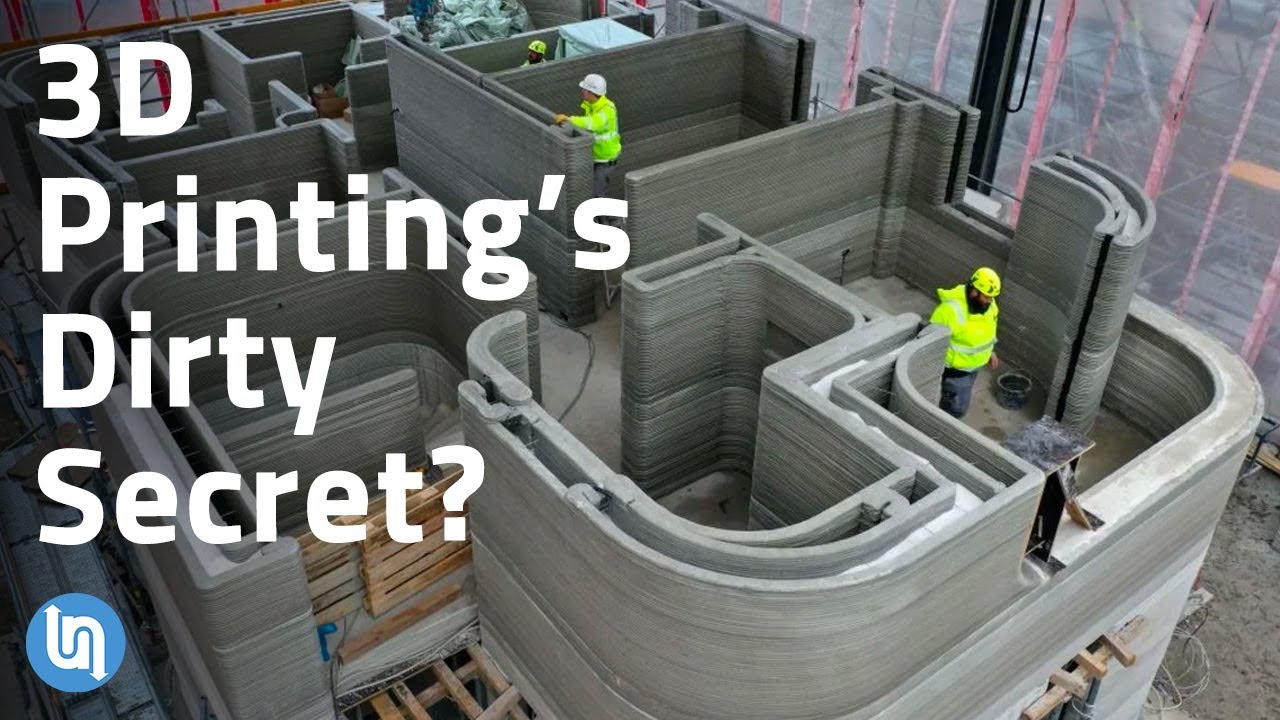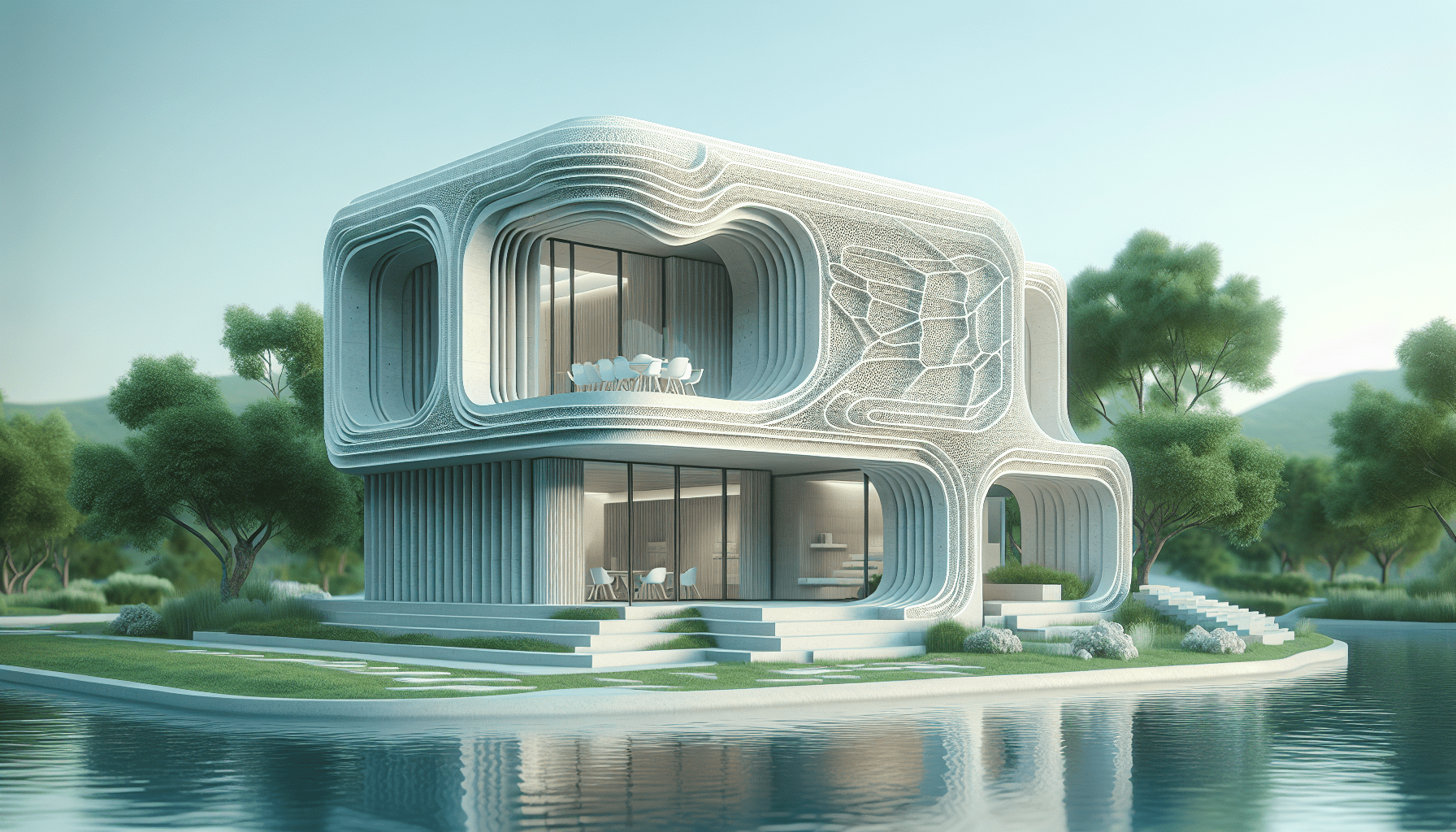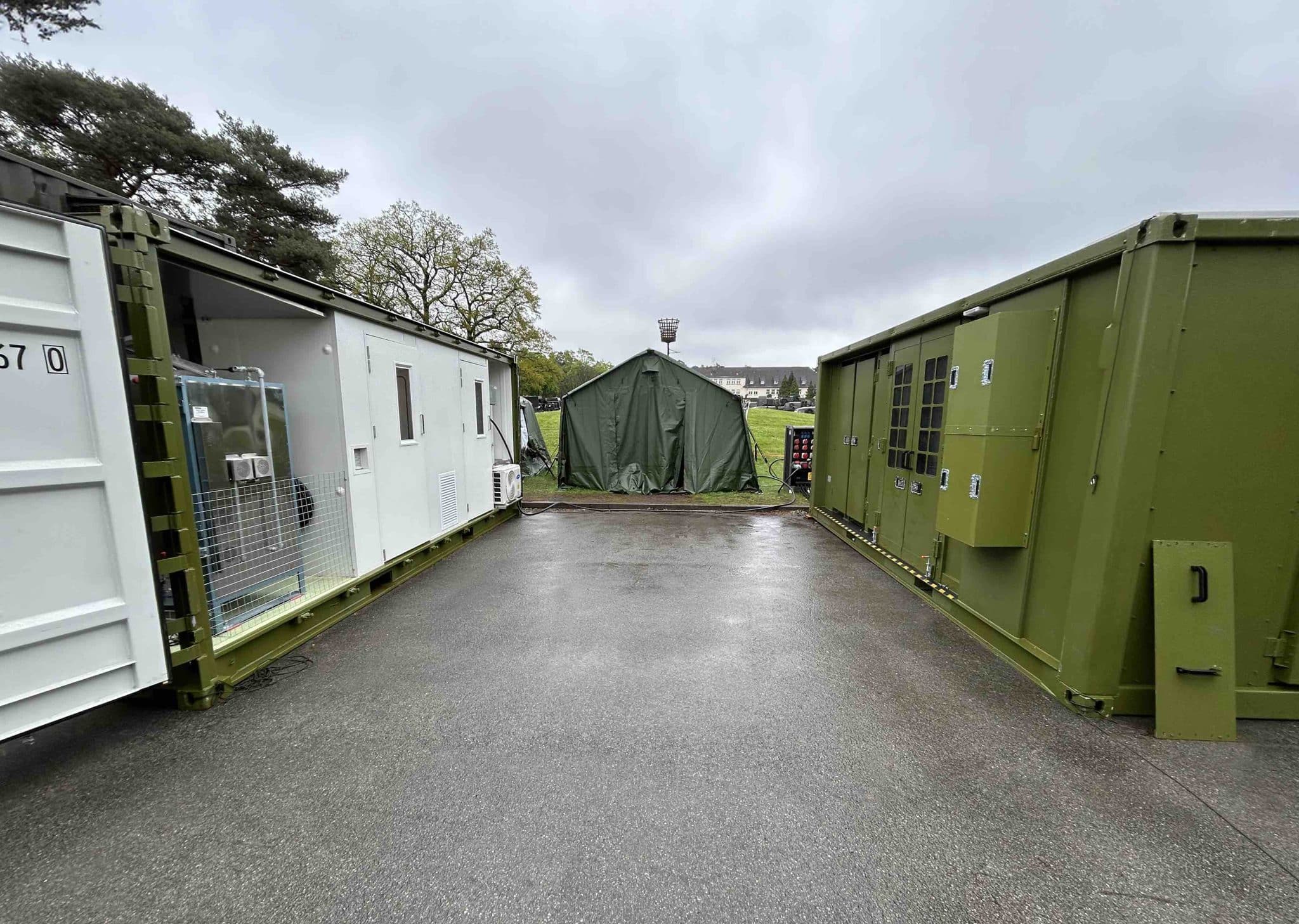ELEGOO Mercury Plus V3.0 Wash and Cure Station, 7.5 L Large Capacity, Compatible with Mars Saturn Photon Halot MSLA LCD DLP 3D Printers
$149.98 (as of June 19, 2025 23:45 GMT +00:00 - More infoProduct prices and availability are accurate as of the date/time indicated and are subject to change. Any price and availability information displayed on [relevant Amazon Site(s), as applicable] at the time of purchase will apply to the purchase of this product.)In today’s tech-driven world, innovations often blur the line between science fiction and reality, and 3D Printed homes are no exception. This article, “The Truth About 3D Printed Homes: Revolution or Hype?” brings to light the intriguing realm of constructing houses layer by layer, challenging the traditional building methods we’ve known for centuries.
The content dives into the promises and limitations of 3D printed homes, exploring whether they are a sustainable solution for future housing or just another trend. With insights from notable voices like Matt Ferrell and Belinda Carr, you’ll gain a comprehensive understanding of the potential and pitfalls of this technology. Whether it’s cost, time, or environmental impact, this piece aims to lay down the facts clearly and engagingly.
$30 off $400+ Anycubic Products with code AC30OFF
What are 3D Printed Homes?
Definition and Basic Principles
3D printed homes are dwellings constructed using 3D Printing technology, which involves layering material to form structures based on digital models. The key principle here is “additive manufacturing,” where materials are added layer by layer to build up the final form. This contrasts with traditional construction methods that often involve cutting materials down to size, resulting in waste. In the context of 3D printed homes, large-scale 3D printers extrude material such as concrete, clay, or a composite to build walls and other structural elements.
Technological Evolution
The technology behind 3D printing has evolved significantly over the years. Initially, it was used primarily for small-scale prototypes and component manufacturing. However, advancements in software, hardware, and materials have expanded its application to include large-scale projects like housing. Modern 3D Printers can operate autonomously, following precise digital instructions to create complex designs with high efficiency and minimal human intervention.
Key Materials Used in 3D Printing
Several materials can be used for 3D printing homes, including concrete, plastic composites, clay, and other natural materials. Concrete is one of the most common due to its durability and availability. Innovations in Material Science have allowed for the development of special concrete mixes that can be extruded through a 3D printer’s nozzle, providing the required strength and stability for construction. Additionally, materials like clay and bioplastics are gaining attention for their sustainability and environmental benefits.
Historical Development
Early Innovations
The concept of 3D printing dates back to the 1980s when Charles Hull invented stereolithography. Early applications were limited to creating prototypes and small parts. It wasn’t until the early 2000s that the idea of applying 3D printing to larger structures, including homes, started gaining traction. Visionary architects and engineers began experimenting with larger-scale printers and more robust materials.
Major Milestones in 3D Printed Housing
Significant milestones in 3D printed housing include the construction of the first 3D printed building in 2014 by the Chinese company WinSun. This project demonstrated the feasibility of using 3D printing for large-scale construction. Another milestone was achieved by the Eindhoven University of Technology, which printed a concrete bridge in 2017. More recently, ICON, an American construction technology company, received attention for its affordable 3D printed homes designed to address housing shortages.
Notable Projects and Case Studies
Prominent examples of 3D printed homes include the TECLA project in Italy by Mario Cucinella Architects, which utilized local clay to create sustainable housing. ICON has also made headlines with its 3D printed homes in Austin, Texas, and Mexico, aimed at providing affordable housing solutions. Another notable project is the Yhnova house in France, printed by the University of Nantes, which became the first 3D printed house occupied by a family.

Buy Photon Mono M5 Get Free 1KG Resin
Advantages of 3D Printed Homes
Cost Savings
3D printed homes can significantly reduce construction costs. The automation of building processes reduces labor costs, and the efficient use of materials minimizes waste. These savings can make housing more affordable, particularly in regions facing severe housing shortages.
Speed of Construction
One of the most remarkable advantages of 3D printing in construction is speed. Traditional construction projects can take months or even years to complete. In contrast, 3D printed homes can be constructed in a matter of days. This rapid construction time is critical for emergency housing and disaster relief efforts.
Material Efficiency
3D Printing Technology allows for precise material usage, reducing waste. Traditional construction methods often involve cutting materials down to size, which generates a significant amount of waste. In contrast, 3D printing uses only the material needed to build each part of the structure.
Design Flexibility
3D printing opens up new possibilities for architectural design. Complex and intricate designs that would be difficult or impossible to achieve with traditional construction methods can be easily realized with 3D printing. This flexibility allows architects to experiment with innovative designs and create more aesthetically pleasing and functional homes.
Challenges and Limitations
Structural Integrity
One of the primary concerns with 3D printed homes is ensuring their structural integrity. While advancements have been made, the long-term durability of these structures compared to traditional buildings is still being studied. Ensuring that 3D printed homes can withstand various loads and stresses is essential for their widespread adoption.
Weather and Climate Adaptability
Another limitation is the adaptability of 3D printed homes to different weather and climate conditions. Structures must be designed to withstand local environmental factors such as extreme temperatures, humidity, and natural disasters. Research is ongoing to develop materials and construction techniques that can meet these challenges.
Regulatory and Certification Issues
The regulatory landscape for 3D printed homes is still evolving. Building codes and certification standards vary widely across regions, and many are not yet equipped to address the unique aspects of 3D printed construction. This can pose challenges for builders and developers looking to pursue 3D printed projects.
Limitations in Material Availability and Technology
While promising, 3D printing technology for construction is still relatively new. Not all regions have access to the required materials and technology. Additionally, the range of suitable materials is currently limited, which can restrict the types of structures that can be built using 3D printing.

Environmental Impact
Reduction in Construction Waste
One of the most significant environmental benefits of 3D printed homes is the reduction in construction waste. Traditional construction methods produce a substantial amount of waste due to material offcuts and inefficient usage. 3D printing uses only the necessary materials, leading to a much more sustainable construction process.
Energy Consumption
While 3D printing can be energy-intensive, advances in technology are working to reduce its energy footprint. The energy used in the production of raw materials, transportation, and on-site construction is generally lower than traditional methods. Additionally, the potential to use local materials can further reduce the environmental impact.
Sustainable Materials
The use of sustainable and locally sourced materials is another environmental benefit of 3D printing. Projects like the TECLA house utilize local clay, which minimizes transportation emissions and reduces the overall carbon footprint of the construction process. This approach can be replicated in various regions using locally available materials.
Carbon Footprint Comparison with Traditional Construction
3D printed homes generally have a lower carbon footprint compared to traditional construction. The efficient use of materials reduces embodied carbon, and the speed of construction means fewer emissions are generated during the building process. Moreover, the potential for integrating renewable energy solutions, like solar panels, can further enhance the sustainability of these homes.
Economic Viability
Cost Analysis
A comprehensive cost analysis of 3D printed homes reveals significant savings in labor and material costs. While the initial investment in 3D printing technology and equipment can be high, the long-term savings make it economically viable. Additionally, the reduced construction time translates to lower financing costs and quicker returns on investment.
Market Acceptance
Market acceptance of 3D printed homes is gradually increasing as more successful projects are completed and publicized. Early adopters, particularly in the affordable housing sector, are demonstrating the practical benefits of this technology. However, widespread acceptance will require further education and outreach to potential buyers, builders, and regulators.
Long-term Financial Benefits and ROI
The long-term financial benefits of 3D printed homes include lower maintenance costs due to the precision and quality of construction. Additionally, the ability to quickly build durable and affordable housing can address pressing social issues like homelessness and housing shortages, providing a significant return on investment for communities and developers alike.

Real-world Case Studies
The TECLA Project
The TECLA project by Mario Cucinella Architects in Italy is a groundbreaking example of sustainable 3D printed housing. Utilizing local clay and a unique design inspired by nature, the project demonstrates how 3D printing can be used to create environmentally friendly and energy-efficient homes. The use of local materials reduces transportation emissions, and the innovative design provides natural insulation and stability.
ICON’s 3D Printed Homes
ICON, an American construction technology company, has been at the forefront of 3D printed housing innovation. Their projects in Austin, Texas, and in Mexico aim to provide affordable housing using advanced 3D printing techniques. ICON’s homes are known for their durability and design flexibility, showcasing the potential for 3D printing to address housing crises in various contexts.
Other Noteworthy Examples
Other noteworthy examples of 3D printed homes include the Yhnova house in France, designed by the University of Nantes, which was the first 3D printed house occupied by a family. In the Netherlands, the University of Eindhoven’s Project Milestone involved constructing a series of 3D printed houses with futuristic designs. These projects highlight the versatility and potential of 3D printing in residential construction.
Technological Innovations
Software and Hardware Advances
Advances in software and hardware have played a crucial role in the development of 3D printed homes. Innovative design software allows architects to create complex models that can be precisely executed by 3D printers. Additionally, improvements in printer technology, such as larger build volumes and more robust extrusion systems, have made it possible to print entire sections of homes efficiently.
Automation and Robotics
The integration of automation and robotics in 3D printing has further streamlined the construction process. Autonomous 3D printers can operate with minimal human intervention, improving safety and efficiency on construction sites. Robotics can also assist with tasks such as material handling and finishing, enhancing the overall construction workflow.
Future Potential Developments
Future potential developments in 3D printed homes include the use of advanced materials with enhanced properties, such as greater strength or improved thermal insulation. Additionally, the ongoing development of more energy-efficient and mobile 3D printers could expand the technology’s application to remote or disaster-stricken areas, providing quick and sustainable housing solutions.
Public Perception and Media Representation
Media Hype vs. Reality
Media coverage of 3D printed homes has often been characterized by significant hype, touting the technology as a revolutionary solution to global housing issues. While there are undeniable benefits, it is essential to balance this enthusiasm with a realistic understanding of current limitations and challenges. Ensuring accurate media representation will help manage expectations and foster trust in the technology.
Public Acceptance and Awareness
Public acceptance of 3D printed homes is growing as more successful projects are completed and the benefits become more apparent. Educating the public about the advantages, such as cost savings, environmental benefits, and design flexibility, is crucial for increasing acceptance. Demonstrating the performance and safety of these homes through real-world case studies can also build confidence among potential buyers and communities.
Influence of Social Media
Social media has played a significant role in raising awareness and generating interest in 3D printed homes. Platforms like YouTube, Instagram, and Twitter allow companies to showcase their projects and innovations to a global audience. Engaging content, such as time-lapse videos of the construction process and tours of completed homes, can captivate viewers and drive enthusiasm for the technology.
Conclusion
Summary of Pros and Cons
3D printed homes offer numerous advantages, including cost savings, rapid construction, material efficiency, and design flexibility. However, there are also challenges, such as ensuring structural integrity, adapting to different climates, navigating regulatory issues, and limitations in material and technology availability. Balancing these pros and cons is essential for understanding the full potential and limitations of 3D printed housing.
Is 3D Printed Housing a Revolution or Hype?
While the media often portrays 3D printed housing as a revolutionary solution, the reality is more nuanced. The technology holds great promise for addressing housing shortages and promoting sustainable construction practices. However, it is not a one-size-fits-all solution and should be viewed as a complement to traditional construction methods rather than a replacement. The continued development and testing of 3D printed homes will determine their ultimate impact on the construction industry.
Final Thoughts on the Future of 3D Printed Homes
The future of 3D printed homes is bright, with ongoing advancements in technology and materials paving the way for broader adoption. As the industry matures, it will be essential to address existing challenges and ensure that the benefits of 3D printed housing are accessible to diverse communities worldwide. With continued innovation and responsible implementation, 3D printed homes have the potential to significantly improve how we build and live in the years to come.
$30 off $400+ Anycubic Products with code AC30OFF








